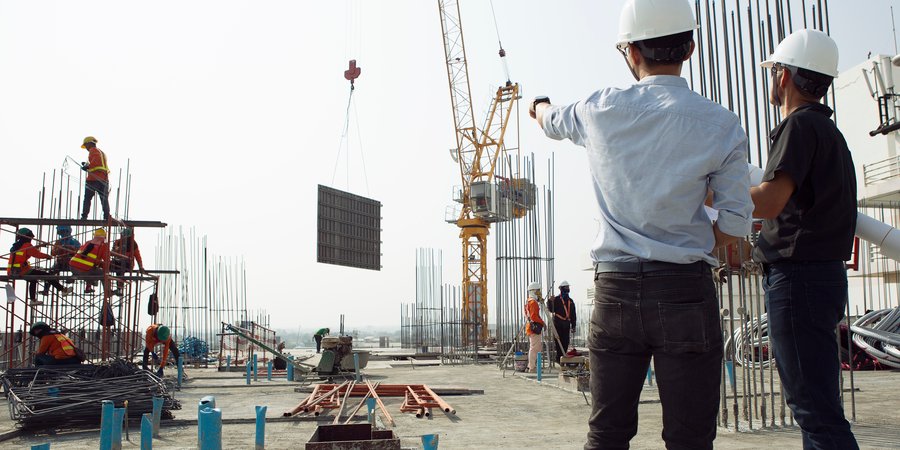As business owners and HR leads, we understand that our workplaces may have safety requirements – but do we understand what they are and what effect they have on our bottom line?
As leaders in HSE training and personnel development, we understand exactly what impact workplace safety has on your business. In this blog post, we will examine workplace safety requirements in the Middle East and discuss why it makes good business sense to introduce them.
What are the workplace safety requirements in the Middle East?
Recently the Ministry of Human Resources and Emiratisation (MOHRE) in the UAE issued its 7-step safe workplace guideline document. Outlined within this was code for basic compliance standards for businesses operating in the region.
- Halls shall not be used as temporary storage areas to store raw or manufactured materials, equipment or garbage
- Sufficient space must be provided around and between machinery, enabling workers to move freely and perform their duties
- Necessary precautions must be taken to protect workers from the dangers of falling, falling objects, or any other harmful substances
- Swamps and standing water near the workplace or facilities must be backfilled
- All premises, tools and any other means used in the workplace must be fire-resistant and conforms to the specifications and technical requirements
- Facilities, entrances, exits and emergency locations shall be marked and provided based on the number of employees
- The flooring of the workplace area shall have an even, flat surface without holes or obstructions and suitable for the nature of the work
Whilst many of us view these standards as fundamental the reality is that only 18% of construction companies in the Dubai Municipality conduct regular health and safety training, 59% of employees in Dubai are never issued safety and health certificates and 74% of workers in Dubai believe their training is outdated when they do receive it, according to an HSME magazine report in 2019.
Clearly, there is work that needs to be done and this is why the MOHRE is bringing this to our attention today in 2022.
What’s the issue with non-compliance?
The real issue with non-compliance comes down to risk mitigation and culpability. If we don’t provide safer working environments we run the risk of accidents. In turn, we run the risk of being sued, at the very least, when things go wrong.
While the MOHRE have said that they will punish non-compliance harshly, there are several other issues that employers need to consider when it comes to health and safety in the workplace.
Language barriers in a multinational workforce are putting people at risk
The Middle East has long been a beacon for multi-national employment and as a result, there are a huge number of employees from different countries, including, India, the Philippines, Iran, China and the UK to name a few.
Language barriers can cause misinterpretation, miscommunication, decrease productivity, decreased collaboration, and even increase unnecessary accidents. This is true of the spoken word, the written word and even visual safety signage.
Non-compliance takes away employees’ voices and rights
In a post-pandemic world where talent shortages are posing problems for organisations, a business’s reputation for employee advocacy is extremely important. By failing to comply with safety standards, companies often fail to recognise potential issues and have no reporting mechanism, meaning employee accidents go unnoticed. Causing a violation of employee rights.
Having word get around that you run an unsafe workplace and hiring new staff will be the least of your worries.
A lack of compliance means a lack of training
Our hope as business owners is that a good employee will work autonomously and we have a level of trust that common sense will prevail in situations of risk. Non-compliance with workplace safety (and therefore no training for it) takes employee autonomy and common sense to uncharted and uncontrolled territories.
This could lead to more accidents that could have easily been prevented.
What does non-compliance really mean? A hit to your bottom line!
To achieve great productivity and profitability you need staff working well. For employees to work well you need to create an environment that promotes their best productivity and motivation. Take something away from this complicated puzzle and the human dynamic is off.
Obstacles at work or even accidents will cause delays, reducing productivity and increasing missed deadlines. If this knock-on effect hits the delivery phase of your product or service then suddenly you don’t get paid.
How Health, Safety and Environment training (HSE) brings you a better business
Simply put effective HSE training does several key things for your business
- It contributes towards making your employees competent in health & safety – making a safer environment for you, them and your customers and suppliers
- It helps your business avoid the distress that accidents and ill health cause – meaning less time off and higher productivity
- It helps you avoid the financial costs of accidents & occupational ill health – which not all business insurance will cover
- It signals trust to your suppliers and customers – meaning doing business with you is always preferred over the competition
- It increases your employee value proposition (EVP) – meaning you get to pick from the best of the best when it comes to talent recruitment
Genie Workforce can help you with all of your HSE training needs
Our in-depth and up-to-date understanding of local and international HSE regulations and standards enables us to guide our clients through various approval processes and ensure timely completion.
We can assist you in meeting a particular short-term HSE goal or provide a longer-term solution to your HSE obligations and requirements. All of our services are tailored to your unique vertical within industry standard compliance.
Genie Workforce’s large team of local and expat HSE consultants are qualified, experienced and understand the requirements of organisations. We always look to match our consultants’ skills to client needs, assigning a team who understands not only your occupational setting but also the industry in which you operate.





